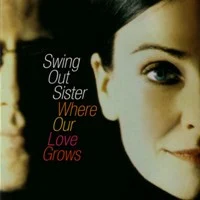Styles: Saxophone Jazz
Year: 1997
File: MP3@320K/s
Time: 49:32
Size: 114,7 MB
Art: Front
(3:11) 1. Prelude
(4:55) 2. The Sons
(6:41) 3. The Kings
(7:39) 4. Wisdom
(4:50) 5. Job
(7:42) 6. No Twilight
(5:00) 7. Pride
(4:06) 8. The Proverbs
(5:24) 9. Abraham Arise!
Year: 1997
File: MP3@320K/s
Time: 49:32
Size: 114,7 MB
Art: Front
(3:11) 1. Prelude
(4:55) 2. The Sons
(6:41) 3. The Kings
(7:39) 4. Wisdom
(4:50) 5. Job
(7:42) 6. No Twilight
(5:00) 7. Pride
(4:06) 8. The Proverbs
(5:24) 9. Abraham Arise!
Multi-reedist John Surman returns to his chorister roots and lays bare his compositional prowess with this oratorio commissioned by the Salisbury Festival and premiered in June of 1996. The Salisbury Festival Chorus, founded in 1987 by Howard Moody (of whose compositions the Hilliard Ensemble and Trio Mediaeval have been strong proponents) approaches its Old Testament sources as the composer sets them: that is, with panache, a flair for syncopation, and raw intensity. Add to this pianist John Taylor in an unexpected turn on cathedral organ, and you’ve got a recipe for one of Surman’s most intriguing catalogue entries to date. Despite the forces assembled, it is he who dominates the palette. The “Prelude” immediately places his cantorial baritone amid a wash of organ in a free-flowing Byzantine mode, thereby establishing a rich narrative quality from the start. Our first foray into choral territory comes in the form of “The Sons,” a robust piece that works men’s and women’s voices in an iron forger’s antiphony toward genealogical harmony. At first, the thicketed singing feels more like a shoreline along which reed and pipes crash in pockets of light and bas-relief. Yet as the “The Kings” soon proves, it is capable of the jaunty togetherness at which Surman excels. “Wisdom” has its finger most firmly on this pulse of greater fellowship, for there is a wisdom of Surman’s own in the brushwork of his soprano, which dances for all the world like the world. This being a live BBC Radio 3 recording that was later mixed down at Oslo’s Rainbow Studio, the quality is rather compressed.
Then again, so is the music, the message of which is as dense as its King James texts. The album’s space is left to Taylor, its images to the voices, its method to Surman’s winds. There is a rusticity to the album’s sound that matches the unadulterated emotions of the music. We hear this especially in “Job,” which like its scripture upholds divine reason in the face of hardship. The chanting here is a form of punctuation, the snaking baritone lines its restless grammar. “No Twilight” continues to unravel the sopranic weave in what amounts to the heart of the album, both in spirit and in execution, and places the voices at the slightest remove to haunting effect. Surman’s streaks of sunlight here the voices of reason add depth of field to this vision, so that the whimsical shallows of “Pride” emphasize the frivolity and fragility of their eponym. The truth comes out in the ruminative organ solo that epilogues the piece. “The Proverbs,” with its ominous recitation, is the freest and builds eddies of judgment and self-reflection (note Surman’s brilliant evocation of the dissenter) until the rays of sacrifice blind with “Abraham Arise!” In light of the stellar body of choral work that ECM has produced, Surman’s forays into the same are not life-changing, if only because they are about unchanging life. True to the lessons at hand, it is more descriptive than it is aesthetic. Its juxtaposition of distinct sonic color schemes is pure Surman, and represents not a detour from but a dive into the kaleidoscope of his discography…and one well worth taking, at that. https://ecmreviews.com/2013/02/15/proverbs-and-songs/
Personnel: John Surman baritone and soprano saxophones, bass clarinet; John Taylor organ
Personnel: John Surman baritone and soprano saxophones, bass clarinet; John Taylor organ
Proverbs And Songs




















